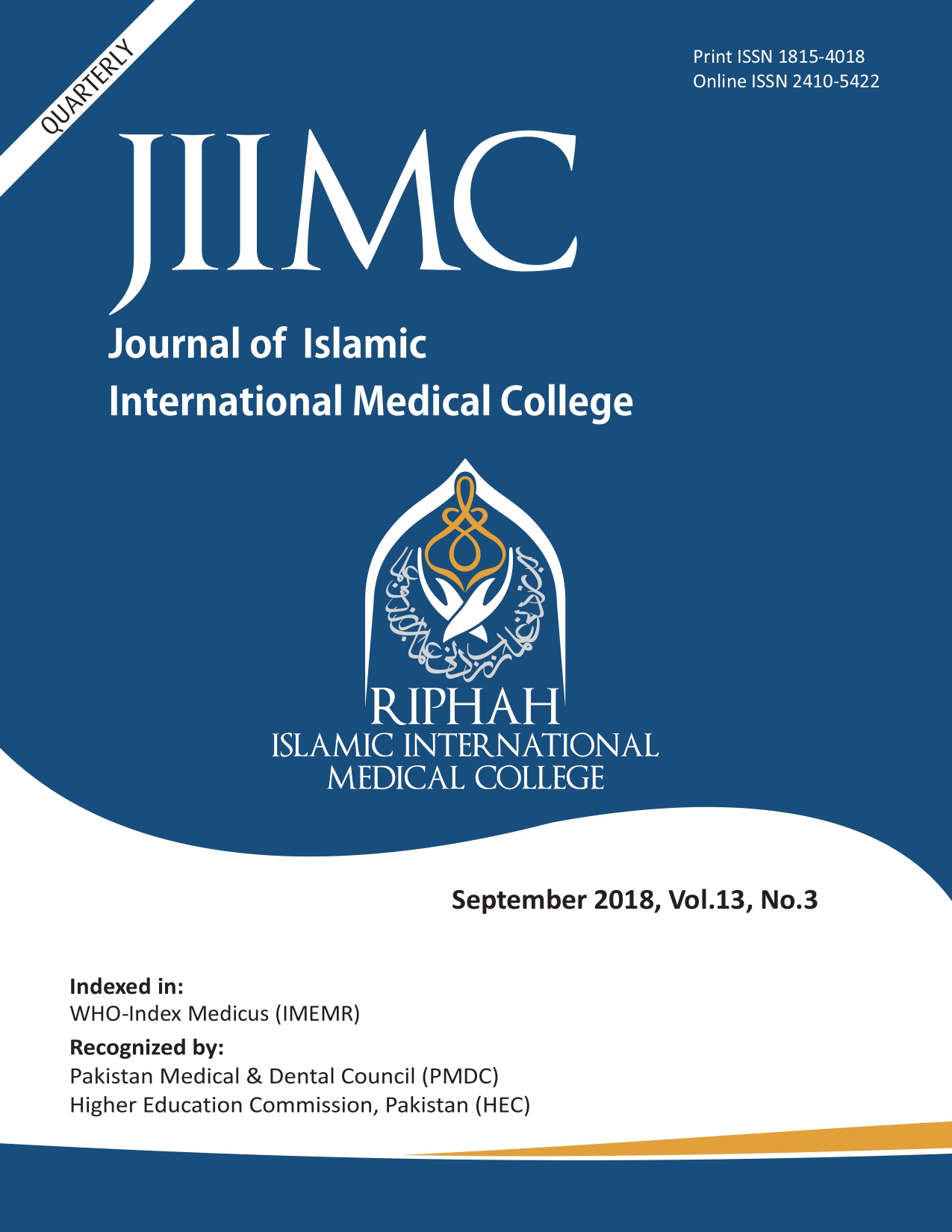Frequency of Hyperandrogenism in Females with Polycystic Ovary Syndrome
Keywords:
Ferriman Gallweyscoring, Hirsutism, Hyperandrogenism, Polycystic Ovary Syndrome.Abstract
Objective: To find the frequency of Hyperandrogenism and Hirsutism in females with Polycystic Ovary Syndrome.
Study Design: Descriptive Case Series.
Place and Duration of Study: Department of Gynaecology and Obstetrics Nishtar Hospital Multan from 21 October 2016 to 9 April 2017.
Materials and Methods: Eighty polycystic ovary syndrome patients with in reproductive age group (15 – 49 18 years) were included in the study through non probability consecutive sampling technique. Hirsutism was examined by FG scoring system and the assessment of Hyperandrogenism was by measurement of serum testosterone levels. SPSS 23.2 was used for data analysis. Frequency and percentage was calculated for categorical variables like Hirsutism, Hyperandrogenism mean and standard deviation was calculated for quantitative variables like age, BMI, Height , weight, serum levels of FSH, LH, And testosterone. T test was applied to check the statistical significance. Effect modifiers and confounders like age, height, weight and BMI were controlled by stratification of data. Post stratification CHI square test was used to check effect modification. P value < 0.05 was taken as significant.
Results: Among total 80 patients, the mean age of the patients was 28.93±8.24 years. Only one (0.5%) patient in our study group had normal weight, 21 (27.4%) women were overweight and remaining 58 (72.1%) patients were obese. The mean FSH, LH and testosterone levels were 6.62±5.3 IU/L, 14.01±7.65 IU/L and 65.13±23.75 ng/dl respectively. Total of 34 (43.7%) patients had Hyperandrogenism. A total of 59.5% (n=48) patients had Hirsutism (FG score >8). Among 34 patients with Hyperandrogenism, 57.8% (n=20) had Hirsutism and out of 46 patients without Hyperandrogenism 60.7% (n=28) had Hirsutism; this difference was not statistically significant; p=0.685.
Conclusion: The observations of our study concluded that a significant numbers of patients with PCOS had Hyperandrogenism and there was no difference in the number of patients with Hirsutism between hyper androgenic and non-hyper androgenic PCOS patients.



